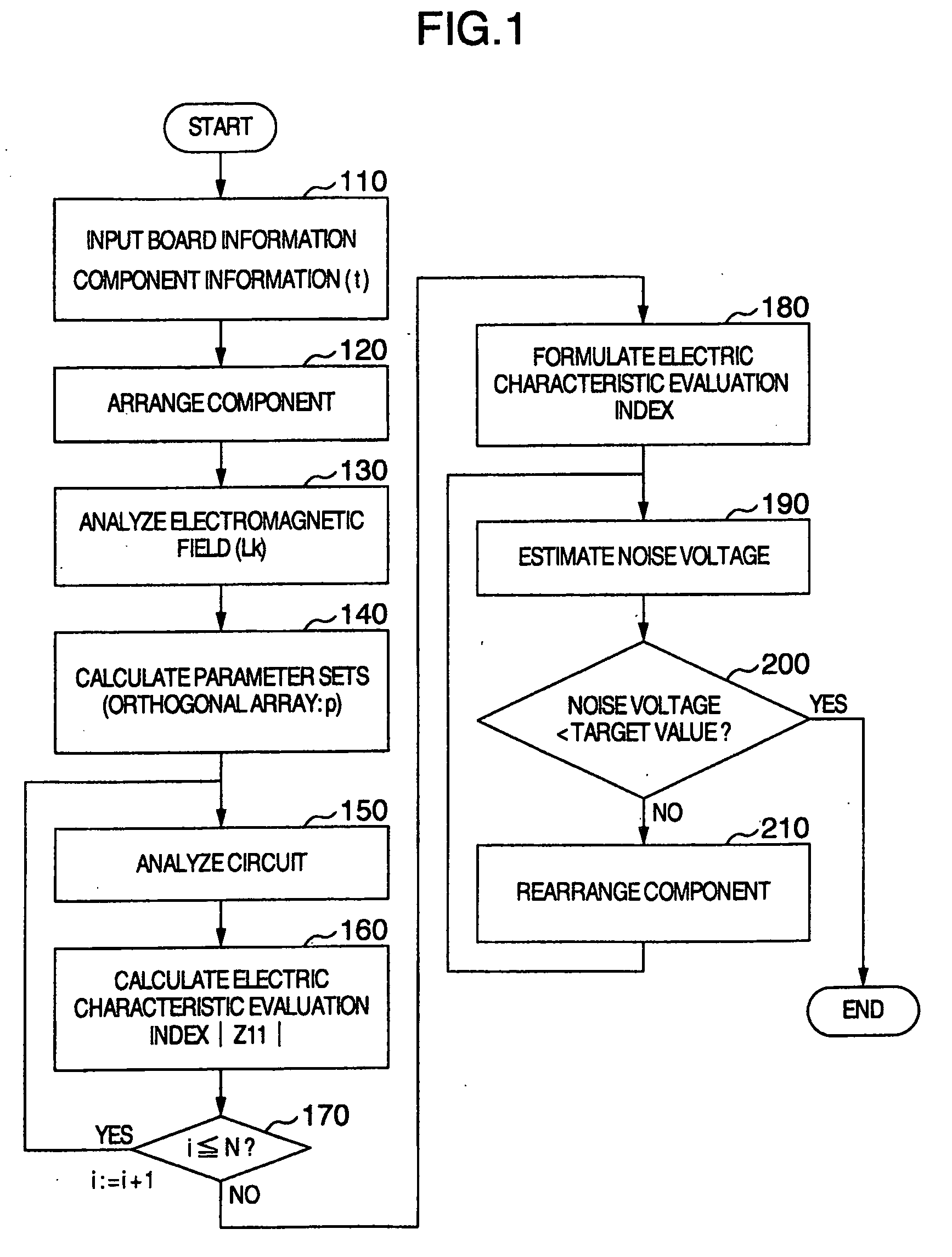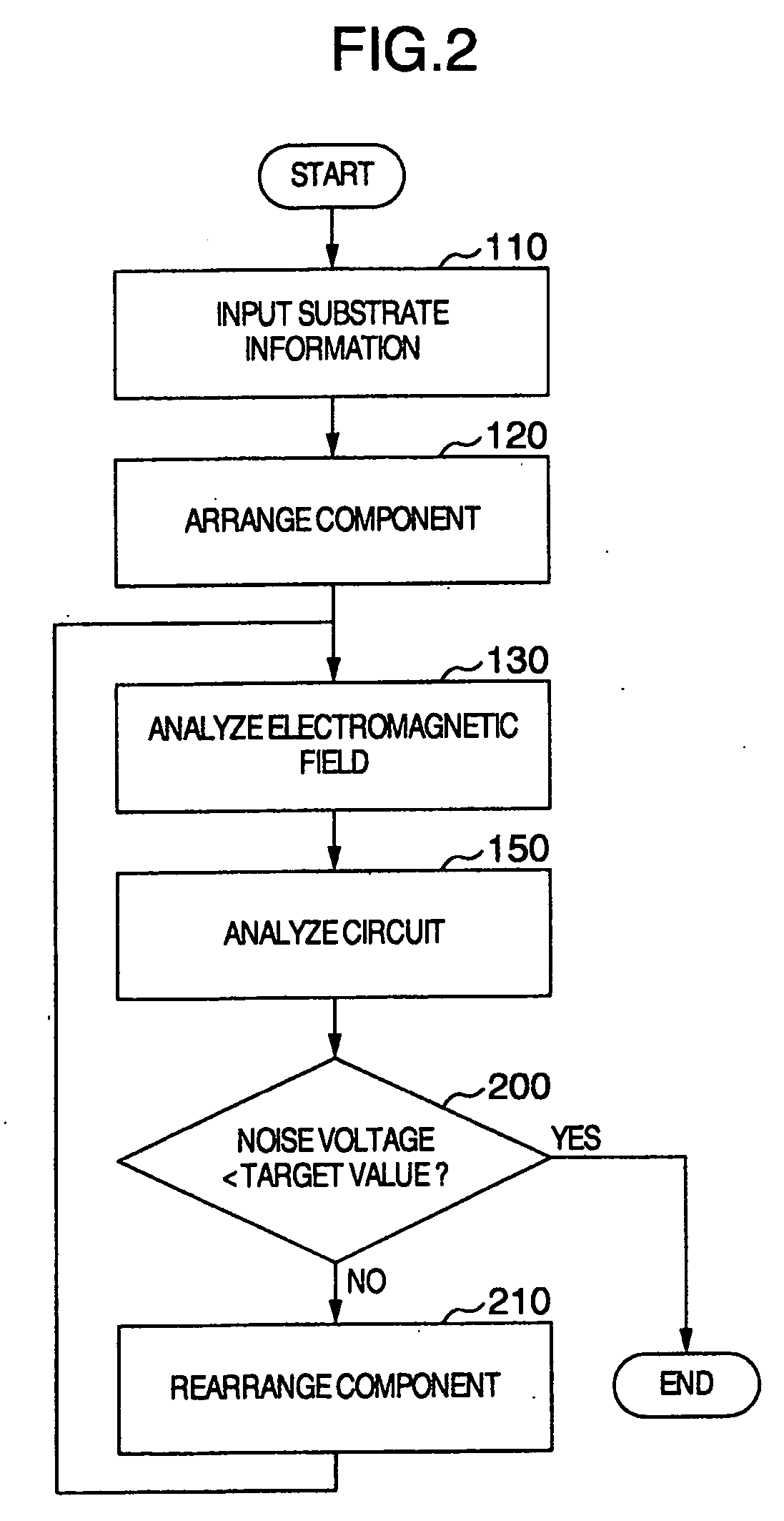Support method and apparatus for printed circuit board
a technology of support method and support apparatus, which is applied in the direction of fault location by increasing the destruction of the printed circuit board, the association of printed circuit non-printed electric components, instruments, etc., can solve the problems of increasing the number of processes, increasing the design cost, and long turn-around time of total design, so as to reduce the design cost of the apparatus, stable operation, and reduce the noise of the power sour
- Summary
- Abstract
- Description
- Claims
- Application Information
AI Technical Summary
Benefits of technology
Problems solved by technology
Method used
Image
Examples
first embodiment
[0036]The first embodiment will be described with reference to FIGS. 1 to 8.
[0037]FIG. 1 is a flow chart illustrating a printed circuit board design method according to the invention. This flow chart will be described first, and then each process will be described in detail.
[0038]In a substrate information inputting process 110, design information of a printed circuit board necessary for printed circuit board design is input, including outer shape information of the printed circuit board, the number of layers, shape information of via holes and the like. At this stage, a wiring design rule and the like not shown are prepared in advance, including circuit connection information (net list), component list information, a wiring inhibition shortest distance, and the like. By using the net list and component list, a component arranging process 120 is executed. The component list includes information on each semiconductor device providing a function and information on each decoupling comp...
second embodiment
[0081]With reference to FIGS. 15, 16 and 17, the second embodiment will be described.
[0082]A different point of FIG. 15 from FIG. 1 resides in that a component rearranging process 230 is performed by using a graphical user interface (GUI). The detailed sequence of this process 230 is illustrated in FIG. 16. First, at Step 231, a noise voltage relative to component arrangement is estimated by using the estimation equation (1) similar to the first embodiment. Next, at Step 232, a calculation result is displayed as illustrated in FIG. 17. Namely, a working window 80 of an information processing apparatus constituting a design support system has screens of a board layout information area 81, an inductance information area 82 indicating a power source impedance and a waveform information area 83 indicating a voltage waveform. In the board information area 81, a power source layer pattern 52, semiconductor devices 11 and 12 and capacitors 21 and 22 are displayed in a printed circuit board...
third embodiment
[0087]The third embodiment will be described by using FIGS. 18 and 19. A difference from the first embodiment resides in that electromagnetic analysis at Step 130 calculates not the inductance Lk but a Y parameter. Instead of circuit analysis at Step 160, a matrix calculation (at Step 155) is performed. The Y parameter is an admittance parameter and uses an admittance matrix of Y parameters at each frequency in the target frequency range. By using Y parameters instead of circuit calculations, it becomes advantageous that formulation of the electric characteristic evaluation index through repetition of Steps 150 to 170 of the first embodiment can be performed in a short time.
[0088]Description will be made on the reason why the calculation is speeded up more that the circuit calculation, by using Y parameters.
[0089]First, description will be made on how a change in the power feeding system impedance when a capacitor component is replaced is calculated. With this calculation approach, ...
PUM
 Login to View More
Login to View More Abstract
Description
Claims
Application Information
 Login to View More
Login to View More - R&D
- Intellectual Property
- Life Sciences
- Materials
- Tech Scout
- Unparalleled Data Quality
- Higher Quality Content
- 60% Fewer Hallucinations
Browse by: Latest US Patents, China's latest patents, Technical Efficacy Thesaurus, Application Domain, Technology Topic, Popular Technical Reports.
© 2025 PatSnap. All rights reserved.Legal|Privacy policy|Modern Slavery Act Transparency Statement|Sitemap|About US| Contact US: help@patsnap.com



